

The dictionary defines "hero" as "a person of distinguished courage or ability, admired for his or her brave deeds and noble qualities." Heroes come in many forms in life, ranging from one's family and friends to athletes to movie stars. A person's heroes can change over time. "
I decided to find out about those people, who in most eyes would be regarded as heroes, but for one reason or another maybe have not been fully recognised as such. I have chosed 10 examples of heroes from an endless list, who may or may not be known to the general public and tried to identify the reasons why I think they are my 'Unsung Heroes'
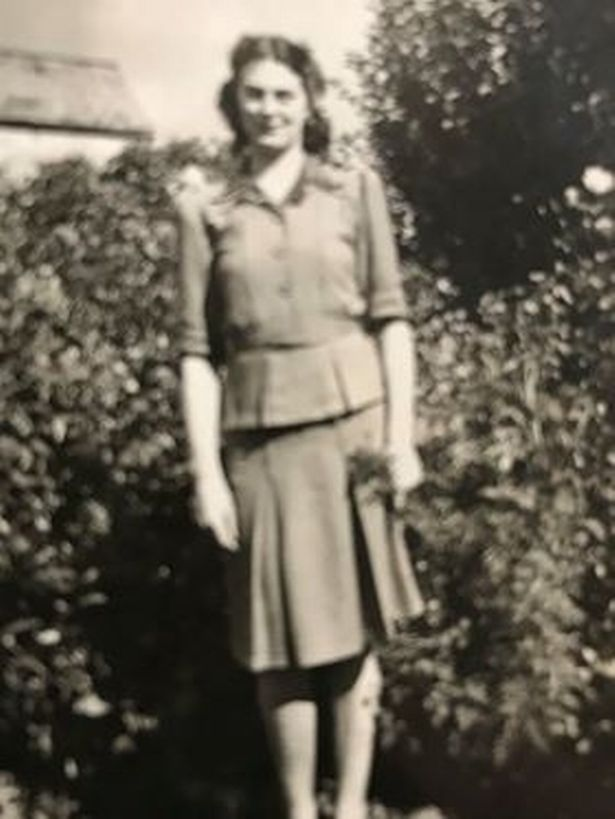
I make no excuse for citing this very brave lady again, as I mentioned what she did in my potted history of the Aberfan Tragedy.
On October 21, 1966, just as 150,000 tonnes of waste from one of the huge spoil tips on the mountainside above the village of Aberfan was about to crash through the wall of the village school killing some 144 people incuding 116 young children, Nansi, with no thought for her own safety flung herself on top of the 5 children who were lined up to give her their dinner money and the consequence of this instinctive act of bravery was the safety of these children at the cost of her own life. Nansi was killed instantly at just 44 years old but the five children she shielded all survived.
The tragedy of this to mine and many others minds is that this act of bravery went almost un-recognised largely I think due to the actions of those in authority who were more interested in saving their own reputations as recriminations started about who was responsible for the tragedy. Even now, outside of South Wales, I doubt that many people have heard of this hitherto un-remarkable women who committed such an incredible act of bravery.
Karen Thomas, who was one of those schoolchildren shielded by Nansi from the catastrophic collapse of a colliery spoil tip, visits Nansi's grave every year on the anniversary of the disaster to place flowers at her grave and to thank the woman who saved her life. "We were shouting at the dinner lady and I was trying to pull her hair, to see if we could have a response from her because she wasn't saying anything to us,” added Karen. "“It's only down to Nansi that I'm here today. I'll never be able to thank her enough for saving us."
For Dai Powell, 57, who attended a different junior school on the other side of the village, said his Auntie Nansi's story means so much to him. “I can only just remember her but her story has been passed down through the family,” he said. “Nansi was married but didn't have any children. She was born in the Aberfan Cemetery House, and that's where I lived. I would love for her bravery to be recognised posthumously. They give medals to singers and sports stars but true heroes go unrecognised."

Most of us have heard of Alan Turing, whose brilliance led to the cracking of the Enigma code and almost certainly led to a significant shortening of the war; books have been written and films made of his story. I mention him here because of the injustice he suffered throughout his lifetime due to him being homosexual which was illegal at that time.
I find it absolutely incredible, and thankful that I have grown up in a more enlightened society, that to avoid prison he had to endure chemical castration which most certainly led indirectly to his suicide from cyanide poisoning in June 1954. He achieved this by coating an apple to hide the taste and the half eaten apple was by his side when he was found in his bedsit. A coroner determined that he had died of cyanide poisoning and that he had taken his own life “while the balance of his mind was disturbed.”
During a critical time in the war when we were suffering shortages of everything from food to guns and tanks due to the attacks on the atlantic shipping by the German submarine wolf- packs, Turing and his team cracked the code that the Germans used to communicate with the submarines and which allowed the Allies to bring these attacks to an end. No-one can say what the outcome of the war would have been if the Allies had not been able to predict, and therefore stop, these attacks; later Winston Churchill said that a failure to do this was the only situation that scared him during the war.
However, the saddest consequence of this was that, even at his death several years later, much of his secretive wartime accomplishments remained classified, far from public view in a nation seized by the security concerns of the Cold War. Instead, by the narrow standards of his day, his reputation was sullied and he died never knowing that eventually the public would hear of his achievements.
Only in 2009 did the government apologize for his treatment. “We’re sorry, you deserved so much better,” said Gordon Brown, then the prime minister. “Alan and the many thousands of other gay men who were convicted, as he was, under homophobic laws were treated terribly.” And only in 2013 did Queen Elizabeth II grant Turing a royal pardon, 59 years after his death. “He was a national treasure, and we hounded him to his death,” said John Graham-Cumming, a computer scientist who campaigned for Turing to be pardoned.
In 2019 the New York Times published an article Overlooked No More: Alan Turing, Condemned Code Breaker and Computer Visionary" which tells Turing's story in greater detail and finally gives full recognition to his brilliance both during and after the war in the field of computer development.

Andrée Borrel is probably one of the lesser known heroines of the SOE during World War II. There have been films and articles about heroines such as Violett Zsabo and Noor Inayat Khan but I personally had not heard of Andrée Borrel
She was born of working class parents on the outskirts of Paris, left school at 14 to work in a bakery and when the Germans invaded France she trained as a nurse to help treat wounded countrymen. She joined the French Resistance operatives organizing one of the country's largest underground escape networks, known as the Pat O'Leary line. She aided at least 65 Allied personnel (mainly British Royal Air Force airmen shot down over enemy territory) on their journeys out of France to Spain through the Pyrenees. Eventually she was betrayed and followed her own escape route out to Lisbon before finally reaching Londoan where she was recruited by the SOE eager to continue fighting for the liberation of France.
She was in the SOE's first training class for female agents, where she learned skills from hand-to-hand combat to Morse code. When asked, "How might you kill a Nazi using what you have on you?" she is said to have responded: "I would jam a pencil through his brain. And he'd deserve it." After training she parachuted into France (the first female combat agent to do so) and worked as a courier for the SOE network 'Physician', which raised bands of Resistance members in the north to carry out guerilla attacks against Nazi troops. Moving between Paris and the countryside, she coordinated aerial supply drops and recruited, armed, and trained Resistance members. She rose to second in command of the network's Paris circuit, which was also funneling enemy intelligence back to the Allies in London.
Her commanding officer described her as "the best of us all." The Nazis, allegedly leveraging intelligence from a double agent, arrested Borrel and fellow Physician leaders in June 1943. After being interrogated and imprisoned around Paris, she was transferred to the Natzweiler-Struthof concentration camp in July 1944 with three other female SOE agents and executed a month after D-Day. Even from prison, she is said to have continued fighting by inserting coded messages about her captors in several letters to her sister. She was just24.
These were incredibly dangerous times for these SOE agents who, knowing they were unlikely to survive, went there out of, maybe patriotism, wanting to fight for their countries freedom and a sense of duty and must have been beyond brave. How they had the courage and dedication to go knowing that capture (probable) would end in torture and death by firing squad is beyond the understanding of most of my generation.

Captain Mahendra Nath Mulla, MVC (1926- 1971) was a recipient of the Mahavir Vir Chakra, the second highest Indian gallantry award. Captain Mulla, went down gallantly with INS Khukri in the 1971 war on the lines of India’s old military tradition where, 'Captains Don’t Abandon Their Ships, No Matter What'.
His citation at the posthumous awards ceremony read
"Two ships of the Indian Navy under the command of Captain M.N. Mulla, senior officer of frigate squadron, were assigned the task of locating and destroying a Pakistani submarine in the North Arabian Sea. During these operations on the night of 9 December 1971, INS “Khukri” was hit by torpedoes fired by the enemy submarine and sank. Having decided to abandon ship, Captain Mulla, without regard for his personal safety, supervised the arrangements for the rescue of his ship’s company in very cool, calm and methodical manner. Even at a later stage whilst the ship was sinking, Captain Mulla showed presence of mind and continued to direct rescue operations and refused to save himself by giving his own life-saving gear to a sailor. Having directed as many of his men as possible to leave the ship, Captain Mulla went back to the bridge to see what further rescue operations could be performed. In doing so, Capt Mulla was last seen going down with his ship. His action and behaviour and the example he set have been in keeping with the highest traditions of the Service. Captain M.N. Mulla displayed conspicuous gallantry and dedication."
He appears in my story because outside of India he is probably unknown. It's the story of an Indian war hero, of which there have been many throughout history, and is unusual because he upheld a centuries old Indian custom that no captain ever abandons his ship and the men in it; he preferred to stand by his 18 officers and 176 sailors who went down with the Khukri and remains the only Indian captain to willingly do this. He taught generations of naval officers not only how to live but how to die.

Everyone has heard of Florence Nightingale (the Lady with the Lamp) but not many have heard of Mary Seacole who was a pioneering nurse and heroine of the Crimean War at the same time as Florence.
Mary Jane Grant was born in Kingston, Jamaica in 1805. Her father was a Scottish soldier, and her mother a Jamaican. Mary learned her nursing skills from her mother, who kept a boarding house for invalid soldiers and although technically 'free', being of mixed race, Mary and her family had few civil rights, e.g. they could not vote, hold public office or enter the professions. In 1836, Mary married Edwin Seacole but the marriage was short-lived as he died in 1844 and her mother shortly after.
She loved to travel and took every opportunity to learn new medical skills to compliment her basic knowledge of traditional medicine. In 1854, Mary travelled to England again, and approached the War Office, asking to be sent as an army nurse to the Crimea where there was known to be poor medical facilities for wounded soldiers. She was refused. Undaunted Seacole funded her own trip to the Crimea where she established the British Hotel near Balaclava to provide 'a mess-table and comfortable quarters for sick and convalescent officers'. She also visited the battlefield, sometimes under fire, to nurse the wounded, and became known as 'Mother Seacole'. Her reputation rivalled that of Florence Nightingale.
After the war she returned to England destitute and in ill health. The press highlighted her plight and in July 1857 a benefit festival was organised to raise money for her, attracting thousands of people. Later that year, Seacole published her memoirs, 'The Wonderful Adventures of Mrs Seacole in Many Lands'. She died on 14 May 1881 (76 years old). She was very well known when she returned to England but was largely forgotten after her death.
As a mixed-race woman living in the 19th century, what Mary Seacole achieved in her lifetime was truly remarkable. She broke social rules and prejudices to travel the world, run businesses and help those in need – even in the most dangerous places. Mary appears in my article because she was an equally effective nurse as Florence Nightingale, probably loved more by her many patients and friends but she was black at a time when most black people were slaves. She achieved many things in her life including novel ways of treating patients, especially those with cholera. Whilst Florence was a nursing pioneer and an excellent organiser who greatly improved the way hospitals were run, Mary’s approach was more personal; she was more hands on as a healer who also provided her patients with advice and support.
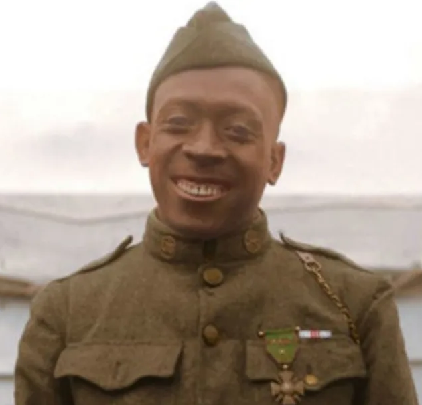
I recently watched a Sky documentary about the 369th Infantry Division, known as the Harlem Hellfighters and in my research for unsung or unknown heroes I came across an article about Private Henry Johnson. Henry Johnson suffered 21 wounds and rescued a soldier while repelling an enemy raid in the Argonne Forest in 1918 but died 11 years later a forgotten man. I have found this to be a recurring theme where black people have done exraordinary things but have been largely ignored and forgotten afterwards.
The American military had little use for the Harlem Hellfighters largely because they were an all-black unit which in World War I meant they were considered weaker and therefore of lesser use than white soldiers. But France badly needed soldiers, so Private Henry Johnson and the rest of the regiment were shipped overseas, where they received French gear and served under French authority. One night, when Johnson and another man were stationed on middle-of-the-night guard duty, a group of German forces attacked. When his fellow soldier went down, Johnson was left alone to fend off the growing group of enemies descending upon him. Once he used up his available grenades and ammunition, he resorted to a bolo knife, with which he somehow managed to kill four Germans and injure between 10 and 20 others, all while sporting bullet wounds in his head, side, hands, and arms.
For his bravery, Johnson was awarded the highest honor in the French military: the Croix du Guerre (191 Days of Combat). Despite his French accolades, he received few honors at home and was unable to take advantage of veteran programs made available to white soldiers. He soon found himself unemployed and died destitute, in 1929 at age 32. As far as anyone knew, he was buried in a pauper’s field in Albany. A man who had earned the nickname “Black Death” in combat was quickly forgotten. Johnson finally received a posthumous Purple Heart in 1996 and the Medal of Honor, which is the highest award in the US military, in 2015.
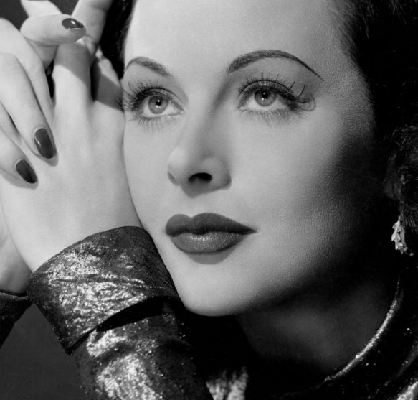
Hedy Lamarr was a famous Holywood actress of the 1930's & 40's who once said "Any girl can be glamorous, all you have to do is stand still and look stupid". Well she was most certainely glamorous and beautiful, but stupid, she was not.
She had a brilliant mind and was responsible for some of the most unlikely and important inventions. Lamarr herself once said, "The brains of people are more interesting than their looks." Although she became typecast as the exotic, seductive femme fatale, she was one of the most prolific inventors of the 20th century.
People tend to recognize true genius after a person is long gone, e.g. Galileo, Thoreau, Van Gogh & Tesla. Despite the fame that she experienced as a glamorous actress, Lamarr was no exception to the rule. She died as a hermit with little money to her name, although she invented the technology that powers so much of our world today.
Her chance to use her brilliant mind came when the US got involved in World War II. Prior to the war, in 1933, she married Austrian munitions manufacturer Fritz Mandl, a key player in providing weapons to the Axis powers and close friend of Hitler. As Mandl's wife she gained access to secret intelligence and understanding the type of military technology the enemy used gave her the idea for the frequency hopping signal, which is used by many modern technologies such as WiFi, Bluetooth, & GPS. The marriage was unhappy and short-lived and Lamarr ended up hiring a maid, drugging her, stealing her uniform, and running away in 1937-8.
On the eve of the U.S.’s involvement in WWII, one of Lamarr’s boyfriends, aviation tycoon Howard Hughes, took note of her brilliance. He introduced her to his aerodynamics team and after analyzing the shapes of the world’s quickest fish and birds, she created a more economical, speedier wing design for his planes. She co-invented a communications system with radio waves that utilised frequency hopping and could be used to jam signals to torpedoes so they missed their targets. The US military turned her down saying that she could better help the war effort by selling war bonds, which she did raising 25 million dollars. Fortunately, her invention didn’t go to waste as it was one of the key communication systems used during the Cuban Missile Crisis. During her lifetime, she came up with ideas for a chair that revolved in and out of the shower, a better traffic light, a tablet that made drinks carbonated, and a fluorescent dog collar.
I think she is worthy of a place in this article as although she was feted for her glamorous acting roles during her lifetime she is virtually unknown for her inventions; many would recognise the name of Hedy Lamarr as an actress but not as an incredible inventor.
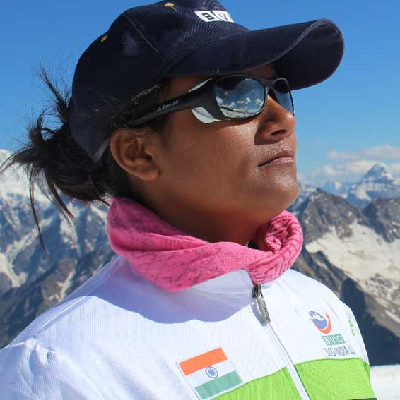
I had intended to tell the story of Tensing Norgay who together with Edmund Hilary was the first to climb Mount Everest in 1953 but, unlike Hilary and Hunt (expedition leader), was not knighted and received only the lesser award of the George Medal, a fact that still rankles today with the Sherpa community. However, I then read an article about Arunima Sinha, which I found more inspiring so here is her short story instead.
I took this paragraph straight out of the 'Ability Magazine' as I think it sums up the triumph of will over adversity. It is a story of courage, determination and dedication; a story of hope and resilience in the face of extreme challenges. In 2011, twenty four year old national level volleyball player Arunima Sinha was thrown off a moving train by thieves for refusing to hand over the gold chain she was wearing. She lost her left leg when a train went over it. As she lay in the hospital bed, with one leg amputated, Arunima Sinha took a vow that many would think impossible. Her goal, from that day onwards, was not just to become adept at walking with a prosthetic leg but scale the highest point in the world – Mount Everest and in 2013 she did just that, becoming the first Indian female amputee to achieve this feat. It was a feat that many would consider impossible and which not only brought back her self confidence but made her an inspiration for everyone back home. In 2015, she was awarded the Padma Shri, the fourth highest civilian award in India.
When asked about the accident she explained that it was by chance she was on the train as a consequence of a mistake on a job application and left for Delhi to fix it. She said "They say our lives are scripted in advance and that we just play our part and fate intervenes in mysterious ways to ensure that no one deviates from the script. It was a wrong date of birth on my CISF interview that led me to take the train journey that changed the course of my life forever. I still get frightened when I think of what happened; on the 11th April, 2011, I was on my way to Delhi from Lucknow by Padmavat Express and was attacked by a group of local robbers. Being a single female traveller, they took me for an easy prey and tried to snatch my gold chain which was gifted by my mother. When I refused to hand over the chain, they attacked me and although I made it hard for them with my athletic physique and fitness, eventually I was overpowered and they threw me off the moving train. Even though the compartment was full of people no one came to the rescue of a girl being robbed and attacked."
Having made this commitment to climb Everest she was fitted with a prosthetic and worked hard to get ready for the climb in the face of many who tried to discourage her. She was helped by Bachendri Pal, the first Indian woman to scale Mount Everest in 1984. To cut a long story short she eventually made the climb with a Sherpa as company and reached the summit on May 21st 2013. Since then she has climbed Mount Kilimanjaro in Africa (May 2014), Mount Elbrus in Europe (July 2014), Mount Kosciuszko in Australia (April 2015), Mount Aconcagua in South America (Dec 2015) & Mount Carstensz in Indonesia (July 2016), which together with Everest are the tallest peaks in six continents.
She says that Swami Vivekananda, an Indian monk and philosopher, was her inspiration; his quote “ARISE, AWAKE AND STOP NOT TILL THE GOAL IS ACHIEVED” inspired her to make her dream come true. As a tribute to his teachings she has placed his photograph on the summits of each mountain she has conquered.
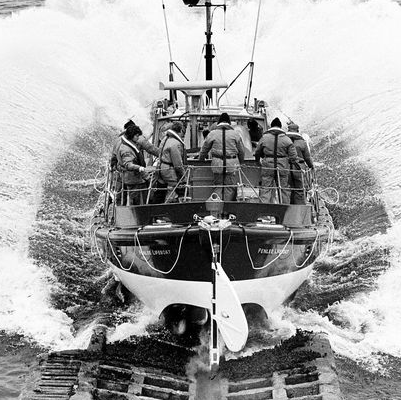
Forty years ago on a dark and stormy Saturday night in December 1981, eight brave lifeboatmen from the Cornish fishing village of Mousehole answered a shout to help a cargo ship in trouble off the coast. Without hesitation, the volunteer Penlee RNLI crew launched the Solomon Browne lifeboat into a raging tempest, with winds topping 100mph and breaking waves rising to 60ft as they set out to save the crew and passengers of the stricken Union Star. They were never seen again;. Five heartbroken women were widowed, 12 sons and daughters left without a father and countless friends and family devastated by such a cruel loss less than a week before Christmas. This is a story of selfless heroism, no doubt played out in many places around the world, when lifeboats, manned mostly by volunteers from different walks of life bought together by a common desire to save lives, set out in horrific weather conditions to rescue people who have got into trouble.
The Union Star’s captain Henry “Mick” Moreton” said his engines were failing after water got into the fuel supply. A brand new £1 million ship on its maiden voyage from Holland to Ireland, the vessel was carrying a cargo of fertiliser, along with the captain’s wife and two teenage stepdaughters, who had joined the ship so that they could be together for the holidays, and a crew of four. The coastguard had called in an RNAS Sea King helicopter to rescue the crew but the coaster was rolling and pitching so violently that her mast threatened to collide with the helicopter overhead. The aircrew decided it had become too dangerous to continue the rescue mission so the lifeboat was called in. After several attempts to get alongside the coaster, the lifeboat crew rescued four of the eight people onboard. But rather than turn back to shore, they made a final heroic rescue attempt - and all radio contact was lost.
Coxswain Trevelyan Richards was posthumously awarded the RNLI’s Gold Medal for Gallantry and the rest of the crew were awarded Bronze Medals. The names of the eight Penlee crew members who valiantly fought to save those onboard the Union Star are inscribed on the RNLI Memorial in Poole. The events of December 19, 1981 and the legacy of the men who selflessly risked their own lives to rescue others, shook the close-knit West Cornwall community to its core and will never be forgotten. Every year on 19 December, the Christmas lights at Mousehole are dimmed between 8 and 9pm in memory of the 16 people who lost their lives, leaving just the Cross and Angels shining down across the village and out to sea. Lieutenant Commander Russell Smith, the pilot of the Sea King helicopter, recounted:
"The greatest act of courage that I have ever seen, and am ever likely to see, was the penultimate courage and dedication shown by the Penlee crew. They were truly the bravest eight men I've ever seen, who were also totally dedicated to upholding the highest standards of the RNLI.
I've included this in my list of unsung heroes as in their normal everyday lives they were just like you and me, ordinary people, doing ordinary things but on this night in December 40 years ago they selflessly performed an extraordinary and courageous act that cost them their lives and they will never be forgotten.
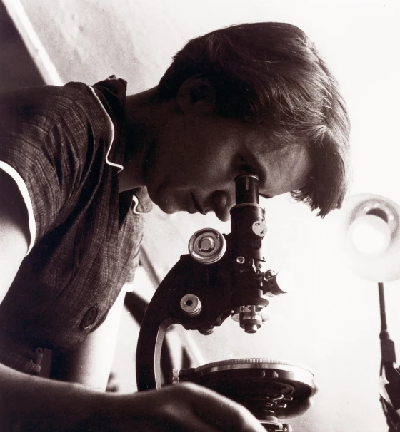
Rosalind Franklin studied the DNA molecule in English laboratories throughout the 1950s. She compiled data that would form part of the basis for the final helical model. One of her students took the first photo of DNA through X-ray crystallography. These findings were known to Jim Watson and Francis Crick, who would ultimately win the Nobel Prize for the discovery of the DNA molecule in 1962. Franklin was not credited for her unpublished, cautious initial studies, and the male-dominated field often treated her with patronizing disdain. Watson, in fact, wrote in his 1968 book “The Double Helix”: “Momentarily I wondered how she would look if she took off her glasses and did something novel with her hair.”
Franklin, whose lab produced the photograph that helped unravel the mystery of DNA, received no credit for her role until after her death. The excuse given at the time was that she had died of cancer and the Nobel committee does not consider posthumous candidacies. This was sexism in science at its worst and meant that Franklin never shared in the scientific community’s highest honor for her work. Franklin never gave Watson and Crick permission to use that work, and in their paper — the scientific record of this discovery — they do not credit Franklin for supplying this evidence or for image B 51, which was so critical to their discovery. Photo 51 was a fuzzy X -ray depicting a strand of DNA extracted from human calf tissue, the clearest shot of life’s building blocks ever seen up to that point, and the first one that seemed to prove once and for all the double-helix structure of DNA. Effectively Watson and Crick stole Franklin's data and then compounded this act by making no mention of her work.
Franklin worked hard and played hard; she loved to travel and enjoyed spirited discussions of science and politics. Friends and close colleagues considered her a brilliant scientist and a kindhearted woman but she could also be short-tempered and stubborn, and some fellow scientists found working with her to be a challenge. Among them was Maurice Wilkins, the man she was to work with at King's College and friction between her and Wilkins and their clashing personalities served to deepen the divide. Franklin would go on to conduct groundbreaking research in RNA and polio before dying at age 37 of ovarian cancer.
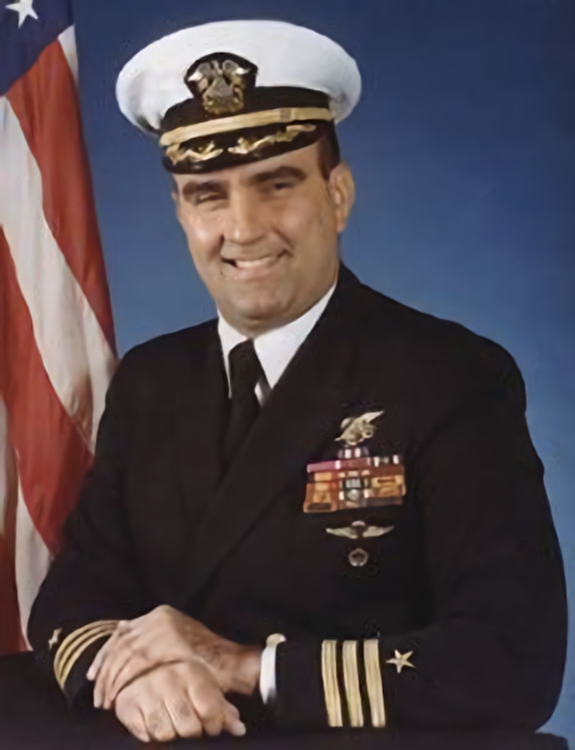
Finally, in my limited list of unsung heroes I have included Commander Richard Marcinko who has quite a remarkable story and who is credited with being founder of the original US Seal Team 6. In fact it is the exploits of this team largely under his leadership that has cemented the reputation of the SEALS (sea, air & land), together with his autobiography Rogue Warrior.
Whilst Dick Marcinko is largely unknown to the general public the exploits of Seal Team 6 are legendry and have been made into a number of films and series on TV. Dick Marcinko is undoubtedly one of the most renowned and controversial figures in the history of the SEALs.
During the Vietnam War, Marcinko led what would become known as the Navy’s most successful SEAL operation: the May 1967 assault on Ilo Ilo Han. His team killed many Viet Cong and destroyed six of their sampans and they were later heavily involved with Army Special Forces during the Tet Offensive at Chau Doc. He received numerous commendations, including the Silver Star, four Bronze Stars with combat “V,” two Navy Commendation Medals, and the Vietnamese Cross of Gallantry with Silver Star. The NVA took the unprecedented step of placing a bounty on his head of 50,000 piastres, a testament to the impact Marcinko had in the fight against the NVA forces. The bounty remained unclaimed throughout the war, as Marcinko continued to lead his men in successful operations and strike fear into the hearts of his enemies.
Marcinko’s charisma and storytelling abilities made him an unforgettable figure. He demanded loyalty and dedication from his men; training exercises were designed to test the team’s response time and operational readiness but sometimes devolved into alcohol-fueled escapades, bar fights, and run-ins with the law. For Marcinko, these events were meant to build unit cohesion, camaraderie, and test the resilience of his men. It was Seal Team 6 (post Marcinko) that carried out the raid that killed Osama Bin Laden. He died December 25, 2021 from a heart attack.
I've included him as an unsung hero as, although famous in some respects, I had never heard of him and found his life story uplifting in spite of his conviction for defrauding the US government which he thought was a witch-hunt due to his work with Red Cell that revealed the weaknesses of military security.
References
Wikipedia